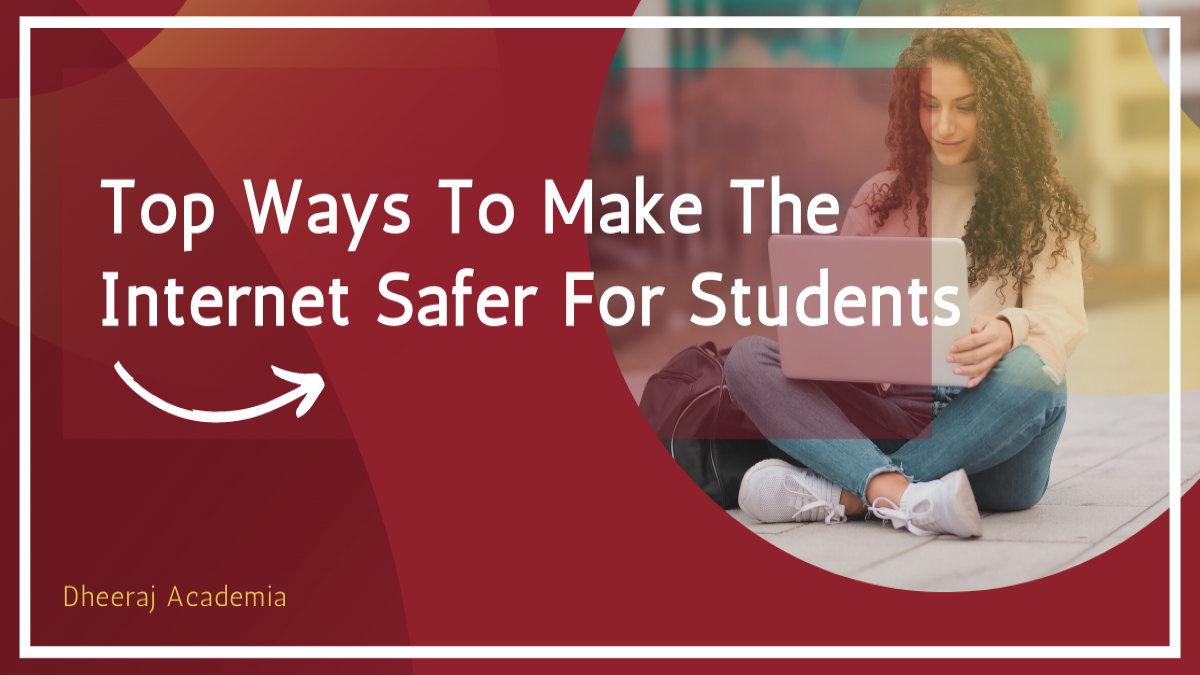The way we live, work, and study is changing vastly with the advent of technological advancements. The distinctions between our online and real worlds are becoming increasingly blurred. Well, it is fantastic on one end! It means students will have more opportunities to interact, create, grow, and make the world a better place than ever before.
Being associated with the best assignment writing company, we understand the importance of acknowledging that students nowadays are immersed in technology at school. The best part of the internet is its accessibility, no matter whether you have a cell phone in your pocket or a computer to accomplish in-class work. Consider teaching your pupils how to be safe while using the internet as you prepare your classroom for the new year.
Naturally, as our world gets more digital, our difficulties, rights, and duties change as well. It’s more crucial than ever to teach pupils about digital citizenship and online safety. Below mentioned are some ways to help you make the Internet safe for the students. Let’s get started!
Ways To Make Internet Safe For The Students
As educators, we must ensure that students can do more than surf the web and consume media. Digital literacy should be led by all educators, from classroom teachers to technology coaches and school leaders. Here are some suggestions for keeping our pupils safe and secure online:
- Learn about your school district’s social media policy:
While lengthy school closures may seem like the ideal opportunity to communicate with children via social media, make sure you follow your district’s standards at all times. It’s crucial to understand what you can and can’t communicate. Some school systems, for example, ask parents to sign a document authorizing permission for photographs to be shared with children. If you’re unsure how to determine if kids have opted in or out, ask your school’s administration or secretary since they frequently have this information.
- Check your social media accounts’ privacy settings:
You can also ask the students to review privacy settings on sites that aren’t prohibited during school hours because many are. Show kids how to access privacy settings at the very least (perhaps through a screencast or screenshot).
- Check your privacy settings to check who has access to your posts.
- Remove persons from your “friends” list who should not be there.
- Search for postings that they wouldn’t want a parent, teacher, employer, or college official to view and delete.
- Look through other people’s tagged photographs.
- Keep the following in mind while sharing information with your students:
We will need to convey important information to our kids. As we all know, social media is occasionally used to publicize an announcement or act as a reminder of something essential. Anything that interferes with our pupils’ privacy should be kept behind a wall. This data should be stored in your LMS or your school’s email. Keep passwords, meeting IDs, and virtual conferencing URLs confidential. If this information is kept confidential, unwanted visitors will be kept out of video sessions with pupils. It’s also crucial to emphasize the necessity of password security for your kids.
- Understanding the right technology:
Many school districts have authorized applications and platforms that have been verified for instructional purposes. This is a wonderful place to start deciding which platforms are ideal for your kids. When utilizing non-educational products, be cautious since they may lack the required privacy settings to secure student information. It doesn’t imply anything is safe just because it’s on the app store. With any free or paid platform, it’s critical to be aware of possible pitfalls. TikTok, for example, is a popular app among children and adults, but it comes with security dangers that should be considered before using it. While we may not always control what shows our pupils watch at home, we can educate ourselves and choose carefully what we employ in the classroom.
- Emphasize the necessity of digital upkeep:
We are standing in the digital world where teaching isn’t glamorous, yet pupils must understand:
- Teach pupils how to save files from Google Disk to an external hard drive.
- Remind them to back up their Google Drive files, crucial emails, smartphone photos/apps, and other vital data at least once a month.
- In the case of an emergency, make sure parents have access to account credentials.
- Put the accounts/passwords on a piece of paper and put them in an envelope in a safe but visible location.
- Reiterate how important it is to log out of accounts rather than merely closing the browser window.
The Bottom Line
Each online not only forces us to think about the topic we’re teaching, but it also forces us to think about how to keep our kids safe online. If you are a girl and want to play some games online, then you must look for some girl ps4 games that you can play easily and have fun. The world of internet safety is broad, and the safeguards above just scratch the surface of what an educator should be aware of. As technology evolves, instructors must remain up to date to protect students’ data while maximizing the benefits of eLearning.

